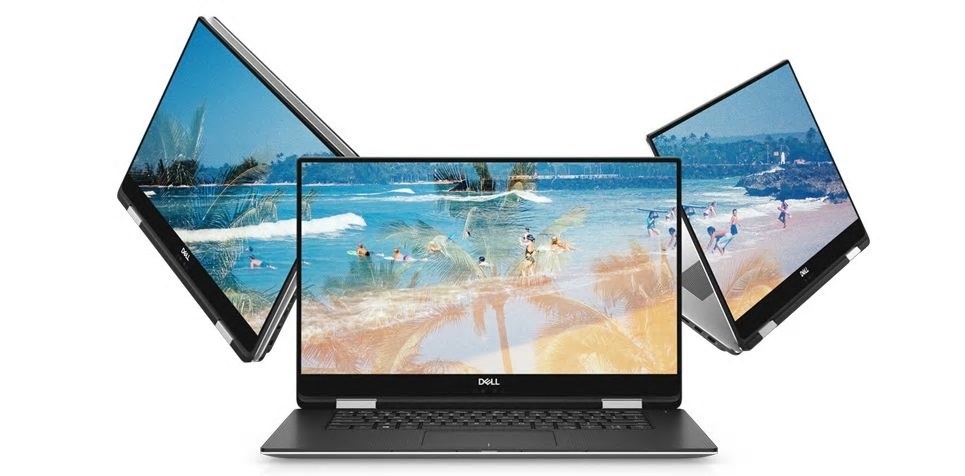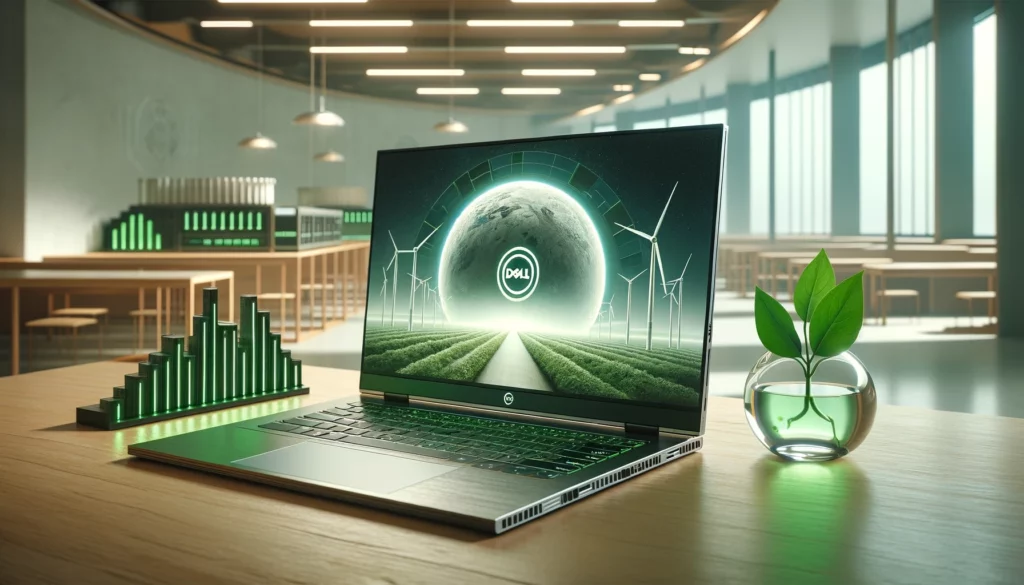There are numerous ways to screw-up classic or iconic products but two come immediately to mind. First, a vendor can treat the device like a holy relic, scrupulously avoiding changes so the thing loses its allure and drifts in irrelevance. Alternatively, a maker can mistake ephemeral trends for valuable innovations, eventually erasing what made the product great in the first place.
However, a few vendors handle the process pretty seamlessly, managing to maintain iconic elements while keeping products contemporary and up-to-date. With that point in mind, let’s look at Dell’s XPS 15 2-in-1 which extends the company’s XPS line with compelling new aesthetic and technical features.
Dell XPS – Above the crowd
While Dell has maintained the XPS brand since 1990 (originally positioning it as a high-end consumer line), the narrative leading to the new XPS 15 2-in-1 began in 2012 with the launch of the first generation XPS 13.
That offering had two specific goals: 1) to highlight Dell’s innovations in the “ultrabook” space—a category defined by Intel that aimed to produce optimally thin, light laptops with exceptional battery life and tablet characteristics, and 2) to directly challenge and beat Apple’s Macbook Air which had defined the market for thin, light laptops since its launch in 2008 (the year after the company dropped “Computer” from its name).
Dell’s boldness shocked and/or amused many in the industry. After all, four years after introducing the iPhone and two years after the iPad launch, Apple was riding high, and the IT chattering classes were yapping about the imminent demise of traditional PCs. The idea that any vendor, let alone Dell, which was better known for aggressive pricing than product and design excellence, could beat Steve Jobs at his own game was ludicrous.
But a funny thing happened. The XPS included a brushed aluminum-top case reminiscent of the Macbook Air, but it also featured unique Dell design features and materials, like softly rounded edges, a durable yet light carbon fiber bottom plate and a silicon surface treatment that felt and looked great. Dell also launched Project Sputnik, a program that created Linux-only versions of the XPS 13 specifically for developers, another core Apple constituency.
Wouldn’t you know it, XPS 13s began flying off the shelves, eventually becoming Dell’s most successful PC line. Over time, the company steadily improved and enhanced the XPS portfolio, adding touchscreen functionality, SSD storage, Dell’s now-signature “InfinityEdge” displays with remarkably narrow bezels, ever-better battery life, and new case and insulation materials that kept things thin, light and cool. In other words, Dell successfully maintained the elements that initially made the XPS 13 stand out while also keeping the XPS line fully up to date with the latest advances.
What about the Macbook? At the same time the XPS 13 was ascending, Apple showed more interest in the iPhone and iPad than its laptop and tower lines. Updates have been slow to arrive, and touchscreen functions (via the controversial AirBar feature) didn’t come to Macbooks until 2017, apparently to avoid compromising iPad sales.
In other words, while Dell and other PC vendors were reinventing themselves and revitalizing the laptop and notebook categories, Apple was firmly entrenching itself as a consumer electronics company. That turned out to be great for shareholders but not so much for Macbook customers.
Dell’s XPS 15 2-in-1 out of the box
The XPS 15 2-in-1 comes in four primary configurations, starting at $1,274.00 (on dell.com) for a model with an 8th Gen Intel Core i5-8305G Processor, 8GB of DDR4 memory and a 128GB SSD. All models sport AMD Radeon RX Vega M GL Graphics with 4GB HMB2 Graphics Memory, supporting perky graphics and Dell Cinema multimedia features. All use a 6-cell 75WHr battery. All are available with either a silver or Brushed Onyx (black) aluminum top, and sport 360° aluminum-wrapped steel hinges.
The review unit Dell sent me was a high-end Brushed Onyx model with a 4-core 8th Gen Intel Core i7-8705G CPU, 16GB of DDR4 memory and a 512GB PCIe SSD with a list price of just under $2,700.00. Larger storage options (1TB and 2TB PCIe SSDs) are available for an additional $539 and $735, respectively. The company also included a Dell Premium Active Pen stylus and a DA300 USB-C mobile adapter. Software included Microsoft Windows 10 Pro 64-bit, McAfee LiveSafe, and Dell solutions, including its Mobile Connect smart phone integration app.
Out of the box, the XPS 15 2-in-1 appears substantial. That is, the feel and fit of the thing is solid. That substantiality is also literal, since it clocks in at 4.36 pounds, significantly more than its smaller sibling’s XPS 13 2-in-1 2.7 pounds. It’s also a tiny bit thicker: 0.36-0.63″ (9-16mm) to 0.32″-0.54″ (8-13.7mm) than the 13-inch version.
So, what do you get with that extra weight and depth? For one thing, more ports and slots: two USB-C 3.1 with power delivery and DisplayPort, two Thunderbolt 3 with power delivery and DisplayPort (4 lanes of PCIe Gen 3, a headset jack, Noble lock slot, MicroSD card reader and battery gauge indicator.
That’s twice as many USB-C and Thunderbolt 3 ports as the XPS 13 offers—a critical point for some users, especially those who will be using the system as a desktop replacement. My review unit also sports Dell’s 15.6″ 4K Ultra HD (3840 x 2160) InfinityEdge touch display, a significant step up in terms of visual quality from the 15.6″ FHD (1920 x 1080) InfinityEdge touch display used in other XPS 15 2-in-1 and all XPS 13 2-in-1 models.
Everyday use
So, what was using Dell’s new 2-in-1 offering like? Let’s talk about aesthetics for a moment. When you spend well over $2,000 for a laptop you expect a high-end product and experience, and the XPS 15 2-in-1 doesn’t disappoint. As I noted before, its feel and fit are excellent, and the Brushed Onyx finish is gorgeous yet understated. In other words, it would look great in virtually any home or workplace setting, including the executive suite. Add in that the system supports all of the select security and manageability features that the company’s workhorse Latitude line does.
Another premium feature worth mention is the gorgeous UHD display which complements graphics experiences. That, in concert with the AMD Radeon RX Vega graphic functions makes the XPS 15 2-in-1 a great system for everything from Dell Cinema multimedia playback to day-to-day graphics editing. The system can also be used for light gaming, though some titles may require resolution or frame rate adjustment.
An unsurprising downside of that UHD goodness is that battery life takes a hit—shaving as much as 20 percent off the battery life offered by XPS 15 2-in-1s with FHD displays. My own experience is in line with other reviewers who report the battery lasting 5-6 hours for video playback, and an hour or so more for simple web browsing. Fully utilizing low power options and dimming the display can get you close to what Dell projects is up to 15 hours of battery life.
How about using the system day-to-day? The XPS 15 2-in-1 offers the same full-sized keyboard design as the smaller 13-inch model. The wider case offers some extra real estate on either side of the keyboard, but that didn’t affect my experience. In addition, Dell uses Gore Thermal Insulation material that effectively spreads and dissipates heat away from the surface, a critical point given the added graphics components
The XPS 15 2-in-1 also leverages a new MagLev keyboard technology (with rare earth magnets located beneath the keys) to mimic the upward travel of a full-scale keyboard. As a result, even though the keys only travel 0.7mm they snap-back far differently than other low-travel keyboards. Personally, I think the keyboard feels and works fantastically well, but the design isn’t universally loved by reviewers. However, keep in mind that it’s also critical to Dell being able to maintain the XPS 15 2-in-1’s thin profile.
I’d like to touch on one XPS issue that continues to elicit reviewer complaints—the placement of the front facing webcam at the bottom of the display. This has been a common design point Dell introduced with its InfinityEdge Display and ever since then reviewers have been calling out the camera’s placement for looking “up the nose” of users during Skype and similar applications.
Everyone is entitled to their opinion, but I find it problematic for two reasons. First, the camera position reflects the simple fact that existing webcams can’t be squeezed into the XPS’s ultra-thin bezel. In other words, it is what it is. As such, I don’t consider the camera’s position to be a design flaw so much as a tradeoff for the greater value of the InfinityEdge Display. In any case, the new XPS 15 2-in-1 offers an alternative for users obsessed with webcam placement; simply flip the XPS into “tent” mode and Bob’s your uncle. Now, can we talk about something else?
Final analysis
Overall, the new XPS 15 2-in-1 qualifies as a superb addition to and extension of one of Dell’s most iconic product lines. By upgrading the system with Intel’s latest CPUs with AMD Radeon graphics, Dell has created a sleek, premium, powerhouse offering that qualifies as one of the market’s best and most innovative hybrid 2-in-1 solutions.
The addition of an optional UHD display, the Brushed Onyx surface treatment and new innovations like the MagLev keyboard technology and Gore Thermal Insulation, have enabled Dell to create a solution that is both aesthetically pleasing and great to use. If you’re in the market for a distinctive 2-in-1 appropriate for both home and the workplace, you owe it to yourself to check out and seriously consider Dell’s new XPS 15 2-in-1.
- Dell Concept Luna – Inspiring Sustainable Innovations with Circular Design - December 21, 2023
- AI Alliance: IBM, Meta, Dell and 50+ Founding Partners Pursue Open, Transparent and Safe AI Innovation - December 13, 2023
- Dell Technologies: Creative Partnering = GenAI Innovation - November 30, 2023




Comments are closed.